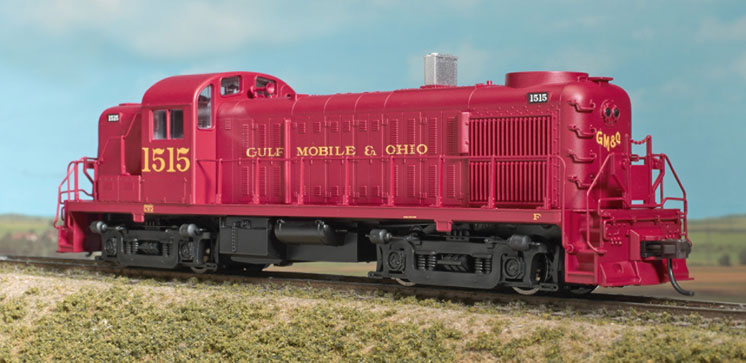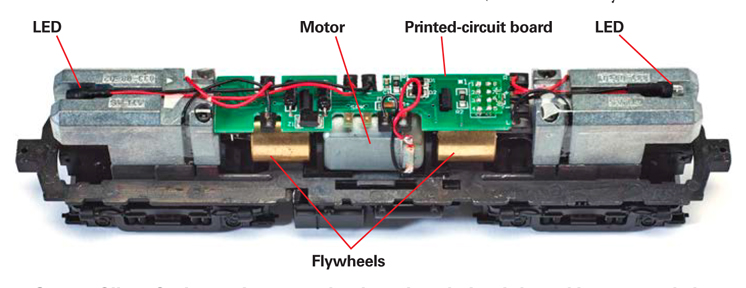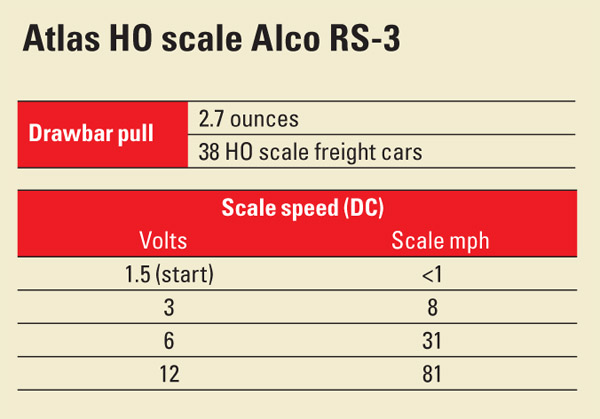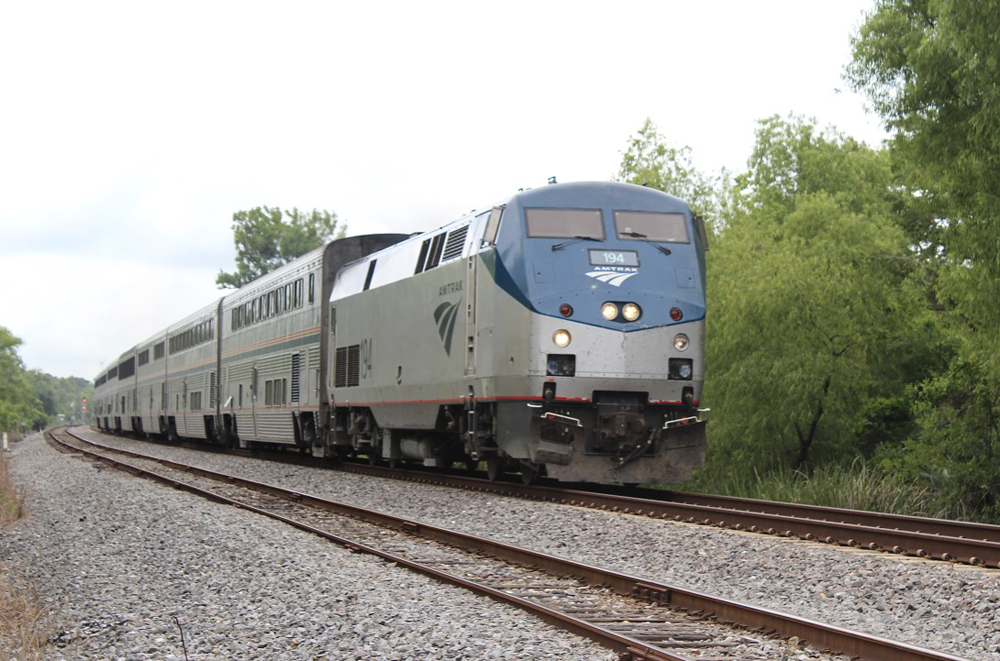The RS‑3, powered by a 1,600-hp, 12-cylinder 244 engine, was a reliable and versatile locomotive. Though it didn’t come close to the popularity of its rival, Electro-Motive Division’s GP7, it was one of Alco’s best-selling locomotives, selling 1,370 units. Only the S-2 switcher sold more for Alco.
Dozens of railroads all across North America purchased RS-3s, but they proved most popular with northeastern and southern roads that didn’t have to contend with particularly tough grades. Western roads tended to favor Alco’s RSD-4 and RSD-5, six-axle versions of the RS-3 that achieved better traction due to a heavier generator and more powered axles. Atlas is also offering RSD-4 and RSD-5 models in this run, but we didn’t receive one for testing.
Once over. All the dimensions I checked on the model matched those on a scale drawing of the prototype printed in Model Railroader Cyclopedia: Vol. 2, Diesel Locomotives (Kalmbach Books, out of print). The placement of details matched these drawings, as well as prototype photos in that book. Our model also strongly resembled a photo of Gulf, Mobile & Ohio RS‑3 no. 1522 in R.R. Wallin’s book Gulf, Mobile & Ohio Color Pictorial (1996, Four Ways West Publishing). Some details on the model differed from that photo, including the single vs. dual headlights, horn placement, and marker lights, but no. 1522 was built two years after no. 1515.
The paint job on our Gulf, Mobile & Ohio sample was smooth and even, and the yellow lettering was straight, opaque, and without voids. The printed builder’s plate and “Engine Water Drain” stencils on the sill were legible under magnification. Most RS‑3s were designed to run long hood forward; an “F” on the sill designates our model that way, too.
The plastic body shell has factory-applied wire grab irons; separate brake wheel, horn, and exhaust stack details; and finely molded rivets, grills, and door louvers. The flexible plastic handrails are close to scale thickness. There’s glazing in the cab windows, but not much room for an interior.
The prototype was available with either an air- or water-cooled turbocharger. The choice of this option resulted in different positions for the exhaust stack, a feature Atlas says will be included on future runs of this model. All current models come with a water- cooled stack.
Our model has a water tank under the frame, between the air reservoir and the rear truck. This feature marks an RS‑3 equipped for passenger service.
The locomotive’s blackened metal wheelsets were in gauge, and the plastic Accumate couplers were mounted at the correct height.
The locomotive responded with a very slow crawl at just 1.5 volts, moving at a speed too low for our scale speedometer to register. At 3V, it rolled steadily at
8 scale mph. The top speed of 81 scale mph the model reached at 12V is quite a bit higher than the prototype’s top speed of 60 mph.
In addition to our test track, I also ran the locomotive on the Madison Central, our last remaining HO scale project layout equipped with a direct-current power pack. The engine easily navigated that model railroad’s 18″ curves and small-radius Atlas Snap Switches. It ran quietly and smoothly at low and high speeds.
The model had a good drawbar pull. Our test bench force meter registered a pull of 2.7 ounces, enough to pull 38 standard 40-foot HO scale boxcars on straight and level track.
An early workhorse. It would probably be easier to list the railroads that didn’t run Alco road switchers in the 1950s and 1960s. One or more of these versatile engines wouldn’t look out of place on almost any HO scale railroad from that era, either decorated for the home road or representing leased power. Whether pulling a local freight, commuter train, or mine drag, these models are ready to go to work on your layout.
Manufacturer
Atlas Model Railroad Co. Inc.
378 Florence Ave.
Hillside, NJ 07205
www.atlasrr.com
Era: May 1950 to late 1970s (Gulf, Mobile & Ohio model, July 1950 to August 1972)
Road names: Gulf, Mobile & Ohio (red); Lamoille Valley (yellow and green); Long Island Rail Road (gray and orange “World’s Fair” scheme); Penn Central (black and white); and Spokane, Portland & Seattle (green and yellow), two road numbers each. New road numbers: Canadian National (green and yellow). Also offered undecorated (with water-cooled turbocharger exhaust stack).
Features
- Accumate couplers at correct height
- All-wheel drive and electrical pickup
- Blackened metal wheels,
- in gauge
- Directional golden-white LED headlights
- ESU LokSound Digital Command Control sound decoder (DCC version) or 8-pin decoder plug (DC version)
- Five-pole, skew-wound can motor with dual brass flywheels
- Minimum radius: 18″
- Separately applied horn, brake wheel, and other details
- Weight: 11.9 ounces
- Wire grab irons

















Hi Bill & MR staffers and other fellow readers,
The new sound chassis will indeed fit older shells, at least those made in China with separate grab irons. I bought my Gold RS 3s to upgrade my LH&R and D&H RS 3s from previous runs and I know several other modelers who have done so as well.
Apparently because of this, Gold versions are scarce on shelves here in the northeast, even for roads you wouldn't expect to see selling very well here.
This run seems to be roller bearing only, no plain bearing versions. A friend of ours who models the Rutland had to swap truck frames, a job he hadn't anticipated.
Best to all.
Fred
Hi, Atlas are re-tooling several models which previously appeared in the Atlas Classic series. it would be really useful if in your reviews of these Atlas upgrades you could say whether the new sound equipped chassis will fit the older bodies, some of which had excellent liveries which may take some time to cycle around again. I have in mind my Central of Georgia RS-3s but others will have other favorites.
I echo the point by Frederick McDermott about the sound version being a better target to review if possible.
Thanks for your work,
Bill.
Good review but I'm disappointed sound version was not reviewed. I don't think there have been any reviews of factory equipped ESU decoder locos and I was really hoping this review was for the DCC sound version of the RS-3.